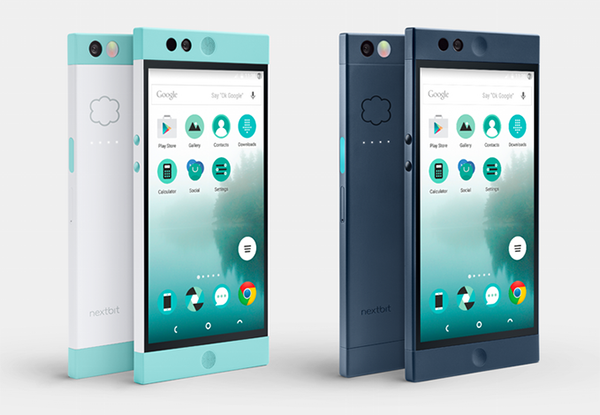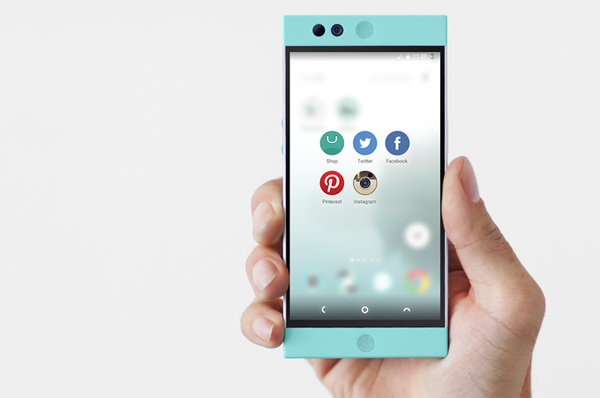NextBit Addresses Privacy Questions, Provides Additional 'Robin' Smartphone Specifications
San Francisco-based startup NextBit recently launched a Kickstarter for its cloud-focused mid-range Android "Robin" smartphone. We were impressed with what we saw initially, as were the backers who quickly helped the Kickstarter hit its initial target in less than a day. That it looks to be a great device, though, isn't surprising, considering the background of some of the company's founders – made up of ex-Google Android and HTC employees.
Even so, there were a couple of spec details we wanted more information on. We (and it seems many of our commenters) also wanted to learn more about how the privacy of its users is protected when utilizing the phone's cloud features.
The first question we asked was why the name "Robin." Nextbit's response is that they wanted to name the phone something different from the "sci-fi names - Siri, Cortana, Xperia, Galaxy, Lumia" of other devices. It felt that a nice-sounding, gender neutral name was "more approachable, human and alive" than other tech names. This does tie in nicely with the design aesthetic of the phone, which is certainly warmer and more friendly-looking than many other current phones.
On the privacy front, NextBit does address this issue on the Kickstarter site by saying that "securing your data is important" and that "your actual credentials and app data will stay directly on the phone." It also said that data is sent encrypted, and stored on the servers encrypted. We asked for more specifics and were told that NextBit uses HTTPS to transmit your data, and Google authentication for your NextBit account management. You sign in with your Google credentials, and if you have a strong password and take extra security measures like enabling 2-factor authentication, your data will be safe.
We also asked for some more details about the camera specifications, weight, and USB connectivity, and have updated our spec sheet, which you can see below. Because the Robin uses USB Type-C, trying to figure out what standard it supports is important, since there is so much confusion about USB 3.1 at the moment. The updated specs are in bold in the table below.
Specifications
| Product | NextBit Robin |
|---|---|
| Display | 5.2-inch IPS LCD @ 1920 x 1080 (423 PPI), Gorilla Glass 4 |
| SoC | Qualcomm Snapdragon 808 (MSM8992) |
| CPU Core | ARM Cortex-A57 (2x @ 1.82 GHz) + ARM Cortex-A53 (4x @ 1.44 GHz) [big.LITTLE] |
| GPU Core | Qualcomm Adreno 418 @ 600 MHz |
| Memory | 3 GB LPDDR3 |
| Storage | 32 GB onboard / 100 Gb online |
| Battery | 2,680 mAh, non-removable |
| Front Camera | 5 MP, Samsung 5E2 sensor |
| Rear Camera | 13 MP Samsung 3M2XXM5 ISOCELL sensor, f/2.2 25.3mm (35mm equivalent) lens, PDAF, dual tone LED flash. 4K video support |
| Connectivity | Wi-Fi 802.11a/b/g/n/ac (2.4 and 5 GHz dual-band), Bluetooth 4.0 LE, NFC, 4G LTE Cat 4, USB 3.1 Gen1 SuperSpeed (5 Gbps) with Type-C connector |
| Special Features | Dual front-facing stereo speakers, fingerprint scanner, Qualcomm Quick Charge 2.0 |
| OS | Android M with NextBit Smart Storage Solution |
| Materials | Aluminum, Plastic |
| Size & Weight | 149 mm x 72 mm x 7 mm, approx. 150g |
As you can see, the Robin uses a Samsung ISOCELL sensor for the rear camera, and this is the same sensor found in a number of Chinese phones such as the Doogee F3, Oppo R7 and Vivo X5 Pro. Along with the PDAF and f/2.2 lens, the Robin should be capable of taking some decent pictures. However, don't expect it to be able to compete with the imaging systems of high-end phones like the LG G4 and Galaxy S6. NextBit also corrected a statement made on the Kickstarter page -- the Robin does record 4K video.
We also asked about manual camera control and were told that although NextBit doesn't have the resources to support Google's Camera2 API right now, the Robin's camera software will still have some manual controls. You can adjust exposure, white balance and ISO. NextBit also mentioned adjustable shutter speed, but support for that, along with manual focus, does, we think, need the Camera2 API, so it's doubtful the Robin will have these features, at least initially. RAW support is also mentioned on the Kickstarter page.
Get Tom's Hardware's best news and in-depth reviews, straight to your inbox.
NextBit also updated us as to what version of Android the Robin will ship with, and we were told it is doing its best to ensure that all units ship with M -- but that is dependent on when Google releases the final RTM build of Android 6.0. This means that if the phone ships with Lollipop, NextBit will include its own fingerprint unlocking support in the OS. Once the Robin is on M, it will use Google's native support and work with Android Pay.
The last question we asked was about the fast charger stretch goal. Apparently, it is correct that the retail release of the Robin will not include a charger (we guess to keep costs as low as possible), with it being a separate purchase. Because the Kickstarter is well on track to hit the $1 million stretch goal, at least backers won't have to worry about procuring a charger, though.
The Robin is certainly an intriguing device, and the cloud functionality -- if it works as well as advertised -- is a unique and powerful feature.
Alex Davies is an Associate Contributing Writer for Tom's Hardware and Tom's IT Pro, covering Smartphones, Tablets, and Virtual Reality. You can follow him on Twitter. Follow Tom's Hardware on Twitter, Facebook, and Google+.
-
schultzter I guess 'tis the season for announcements, but it would nice to see a list of new hardware that's actually new, not just last year's device with spec bump from this year's components. Some devices that might not attract the mainstream buyer (because they don't get pushed by the carriers) but would attract the geeks.Reply

